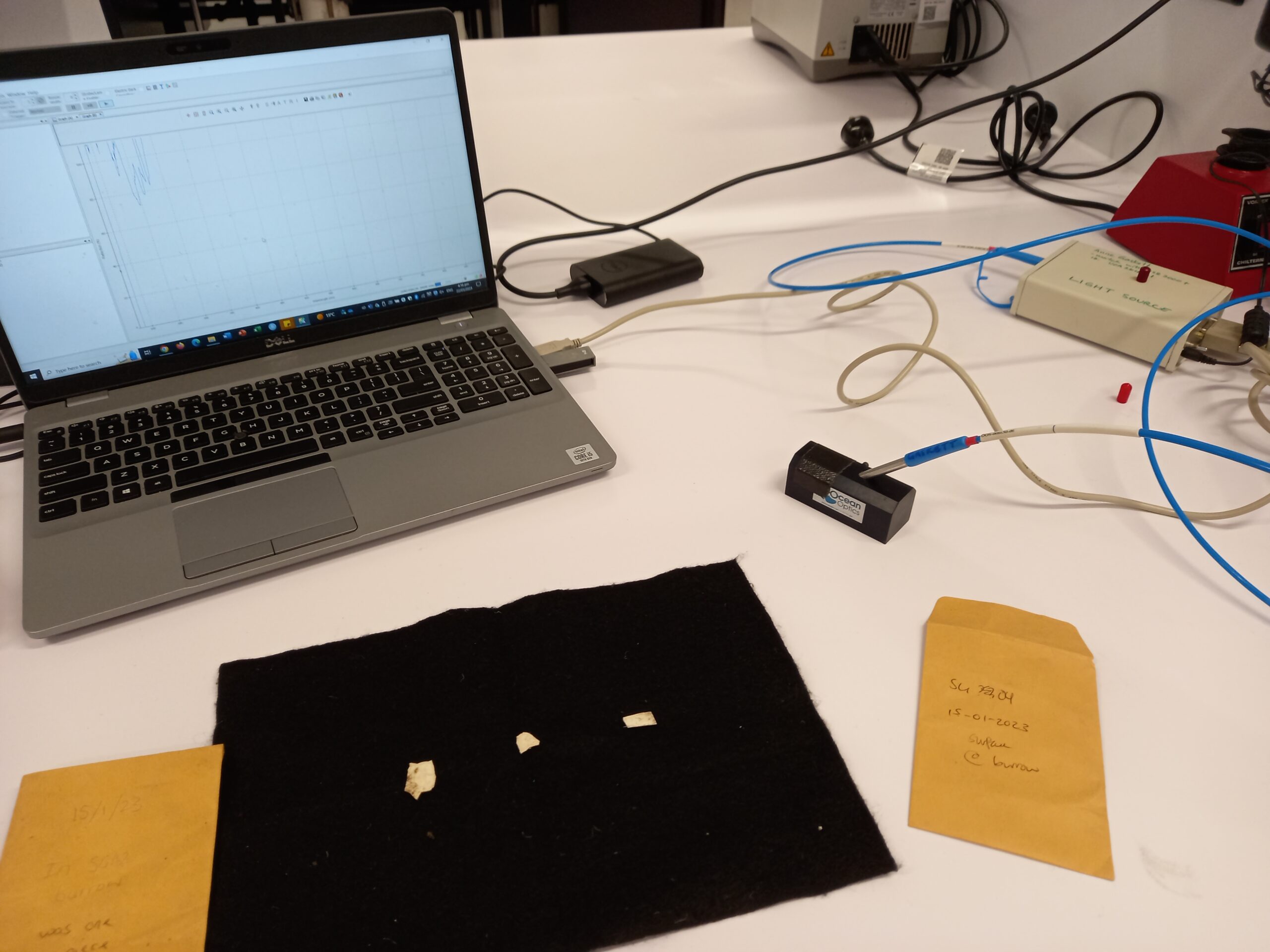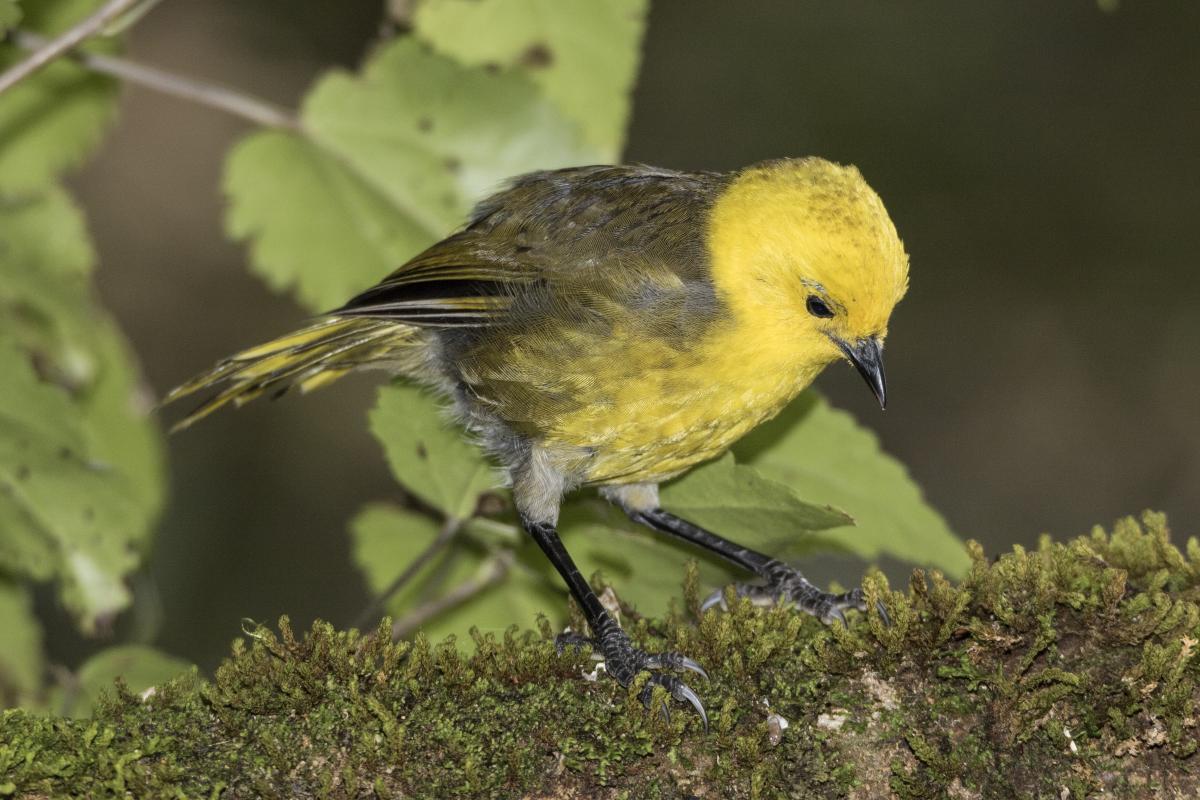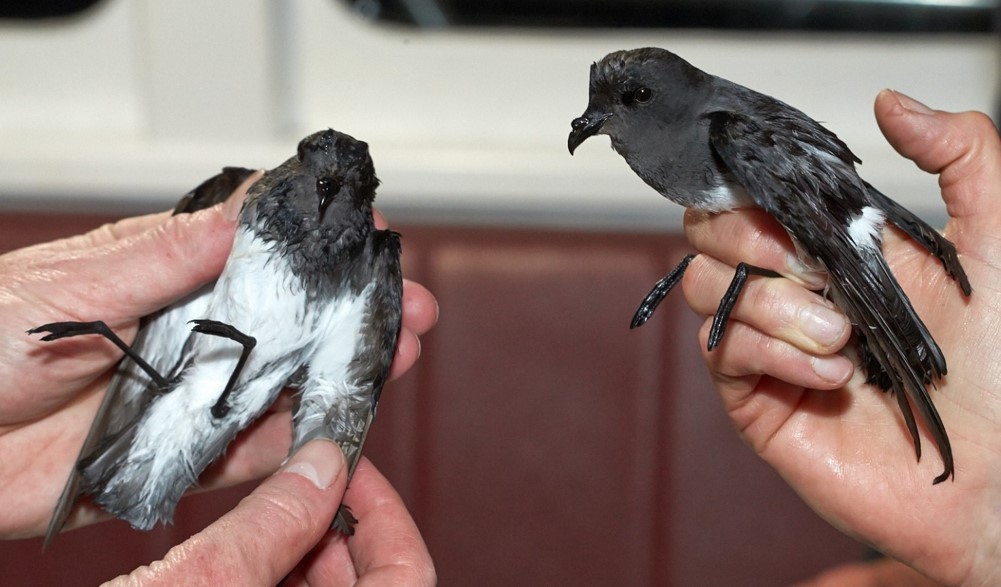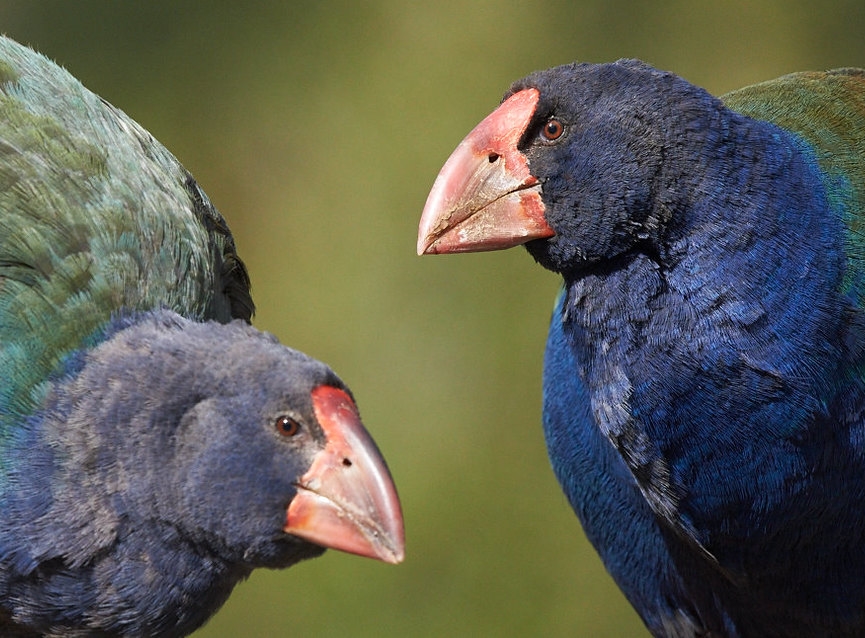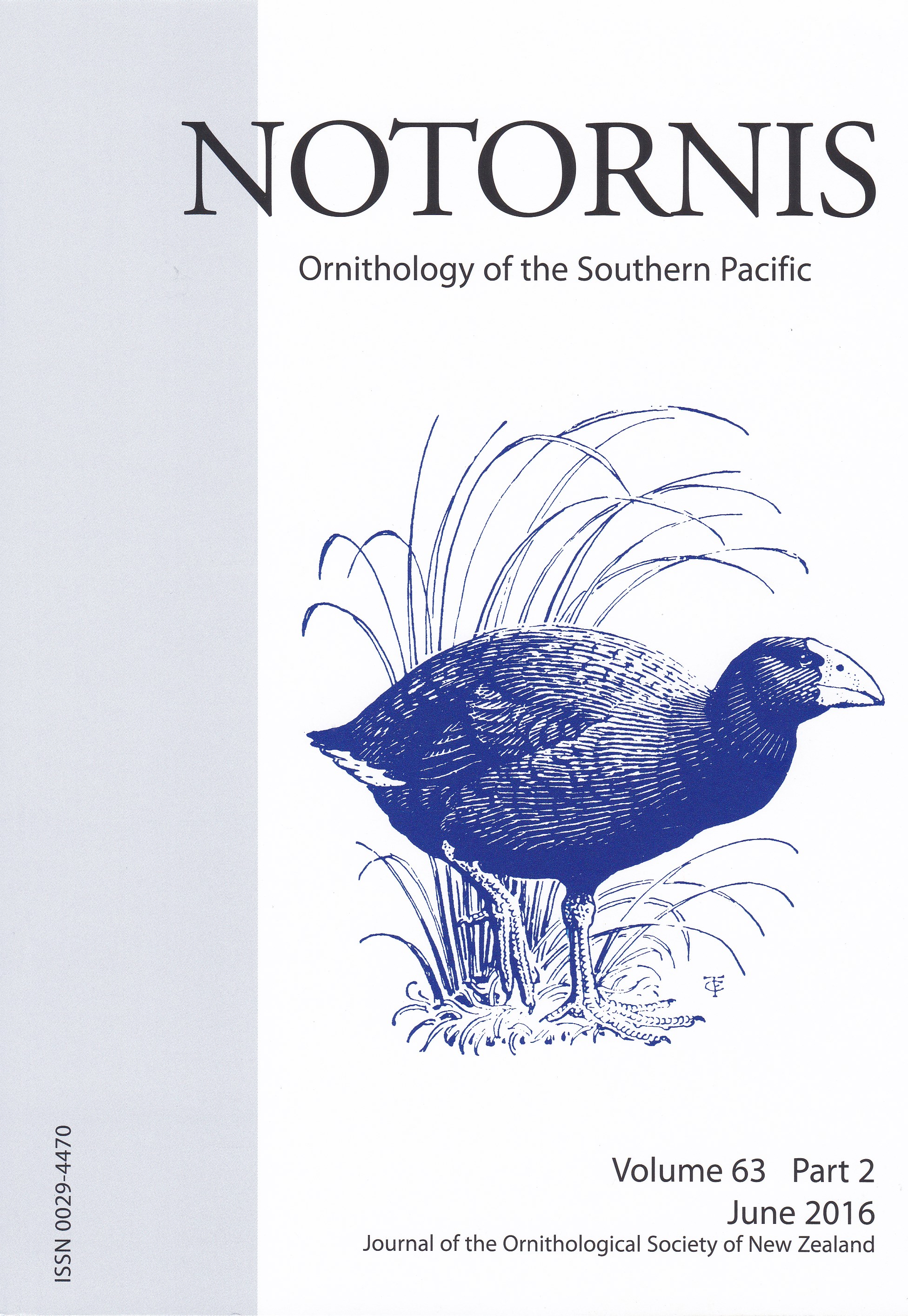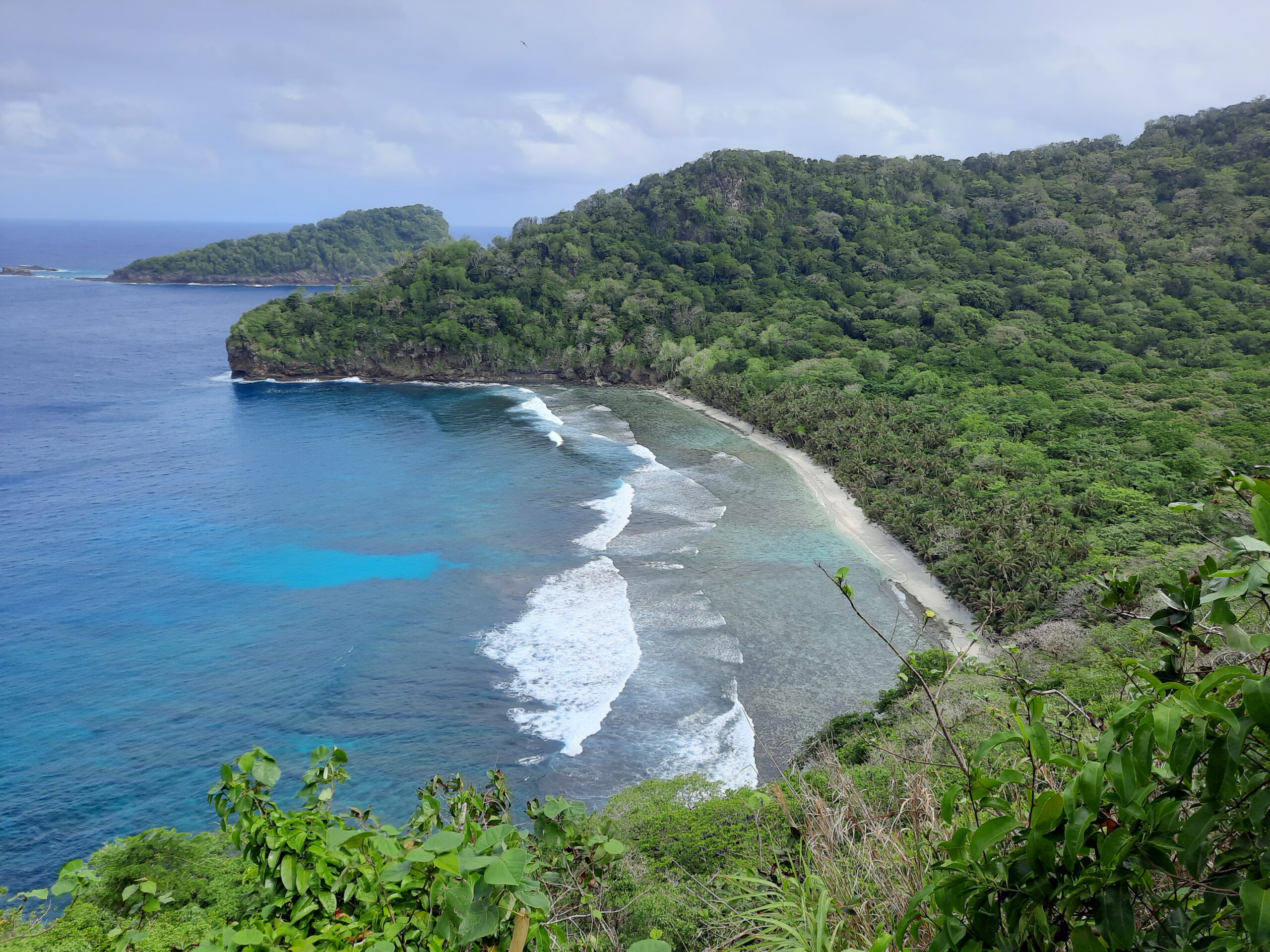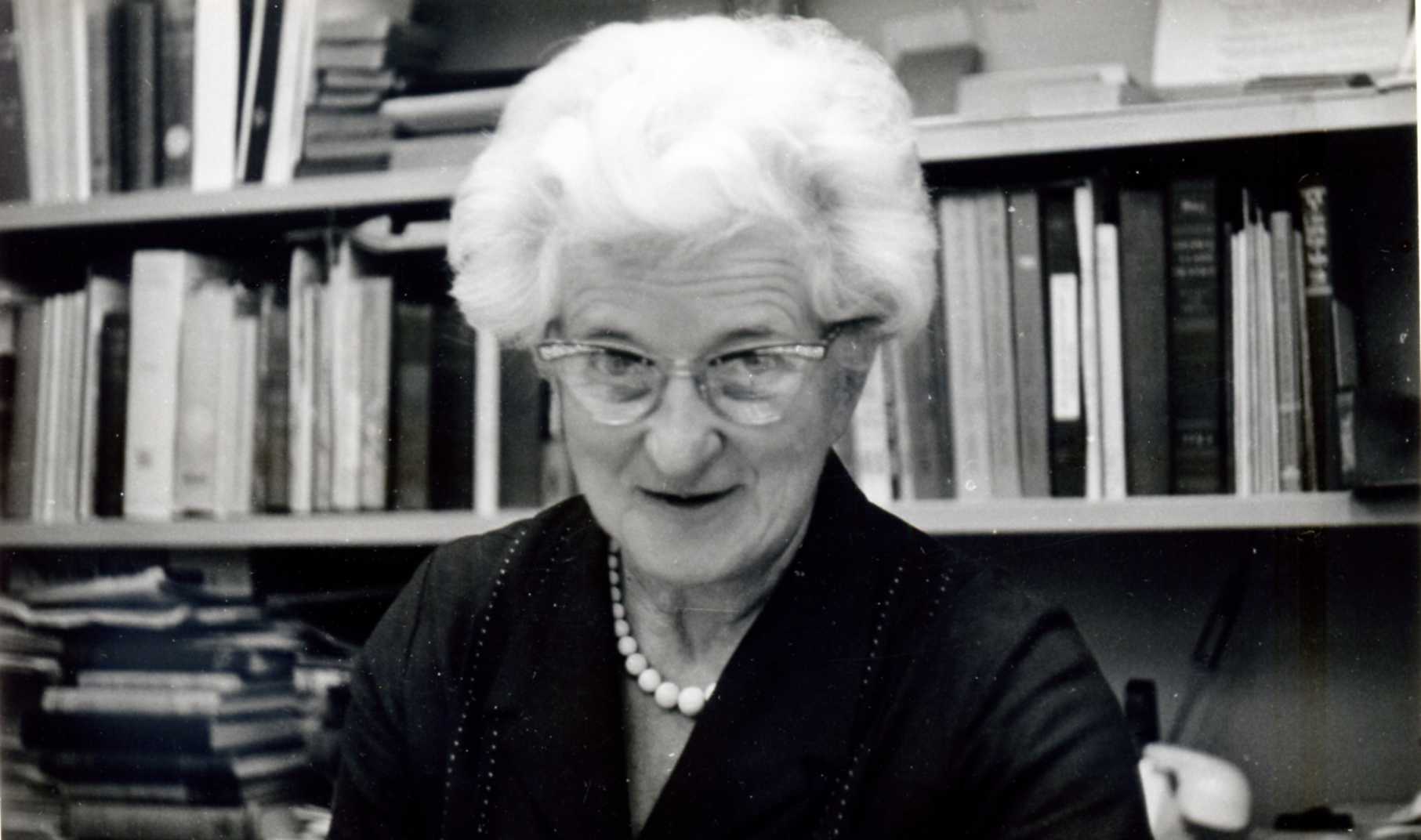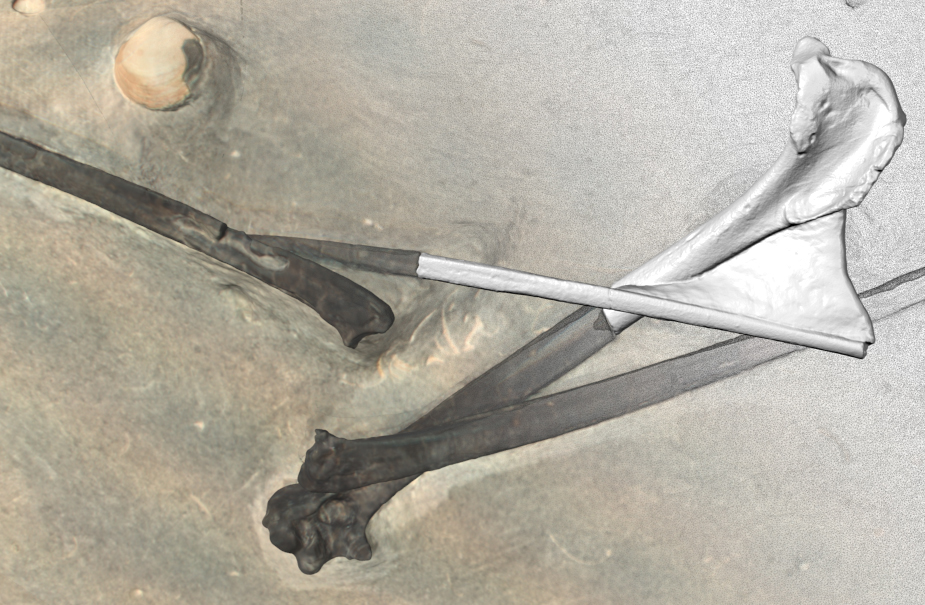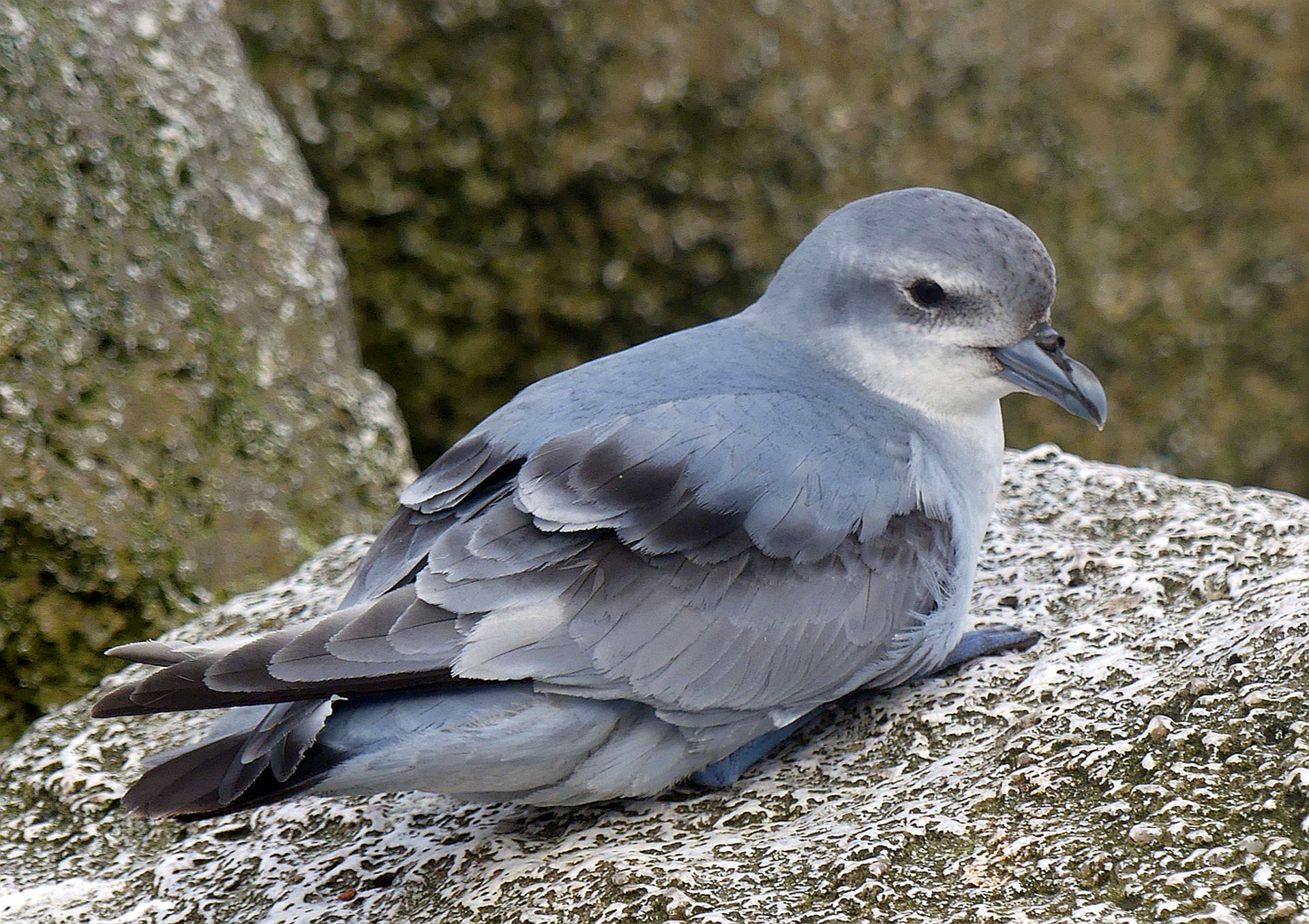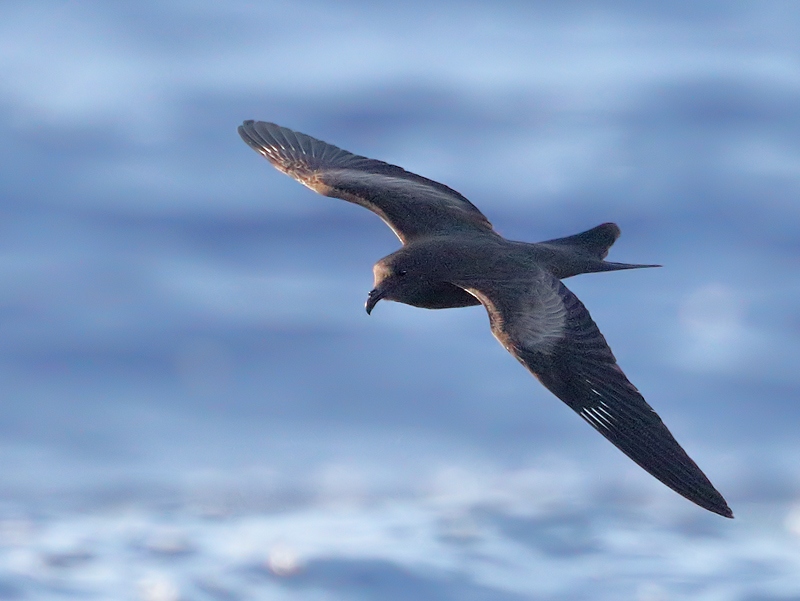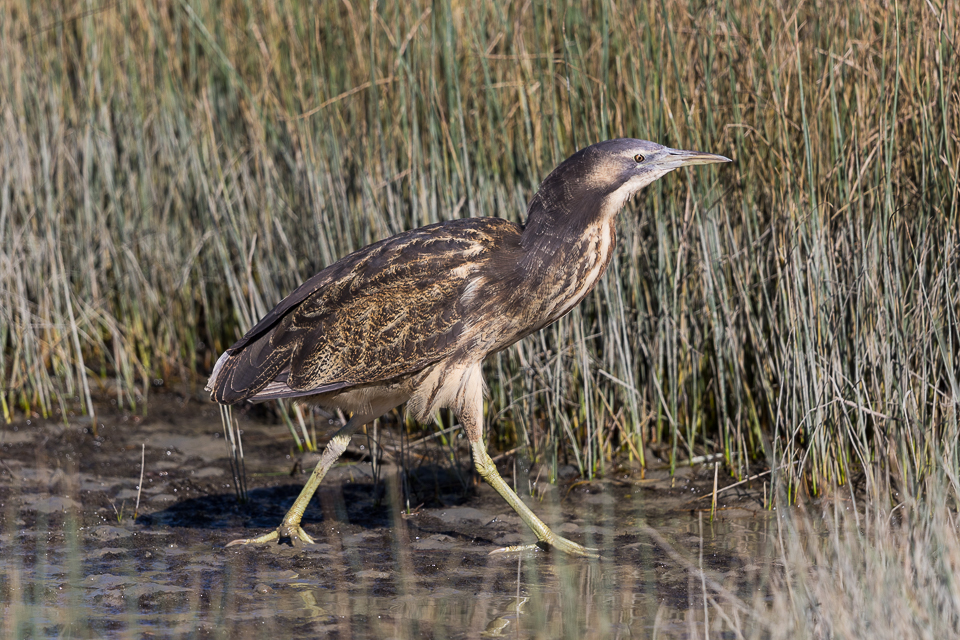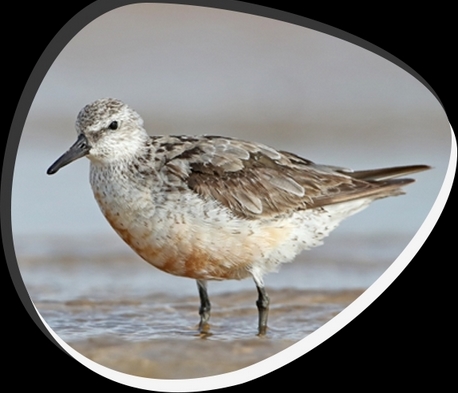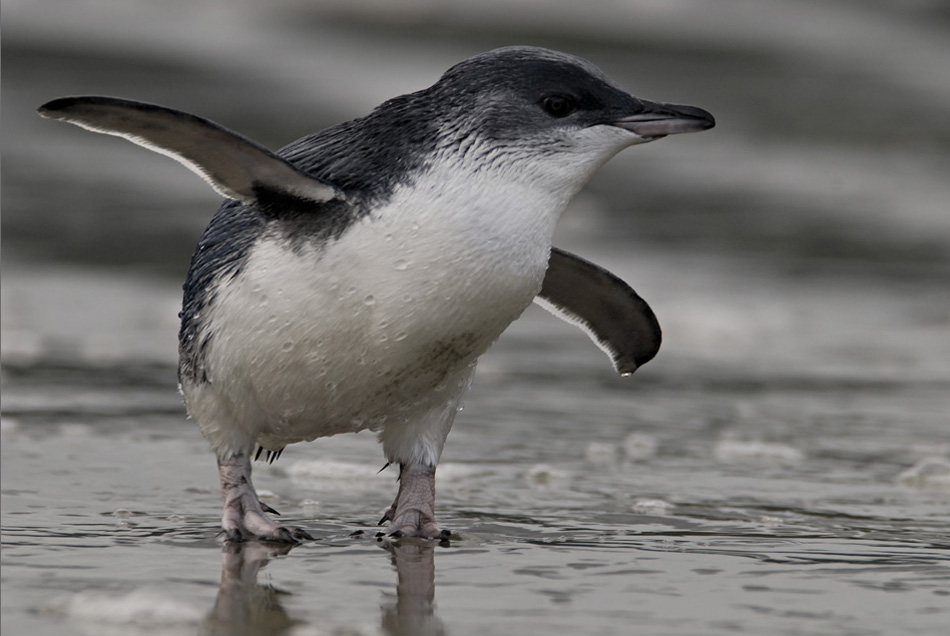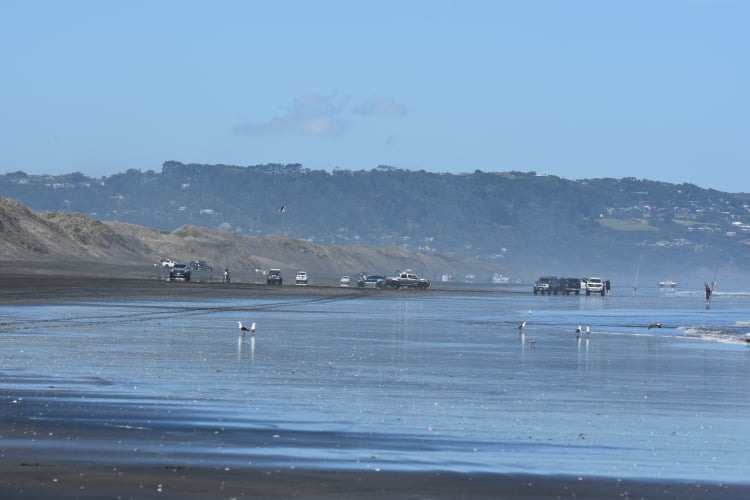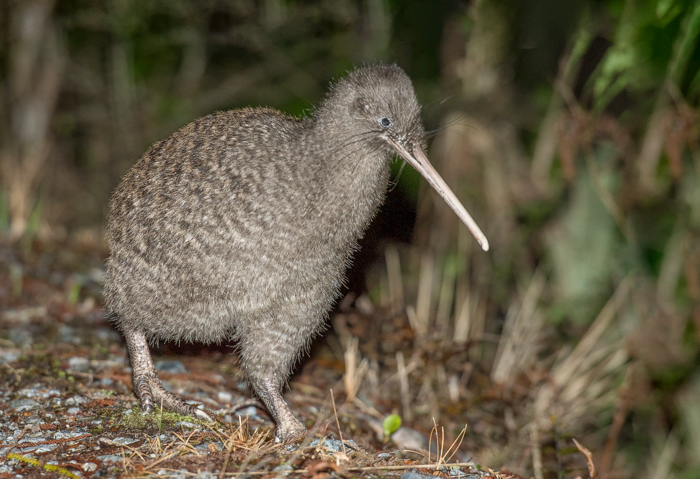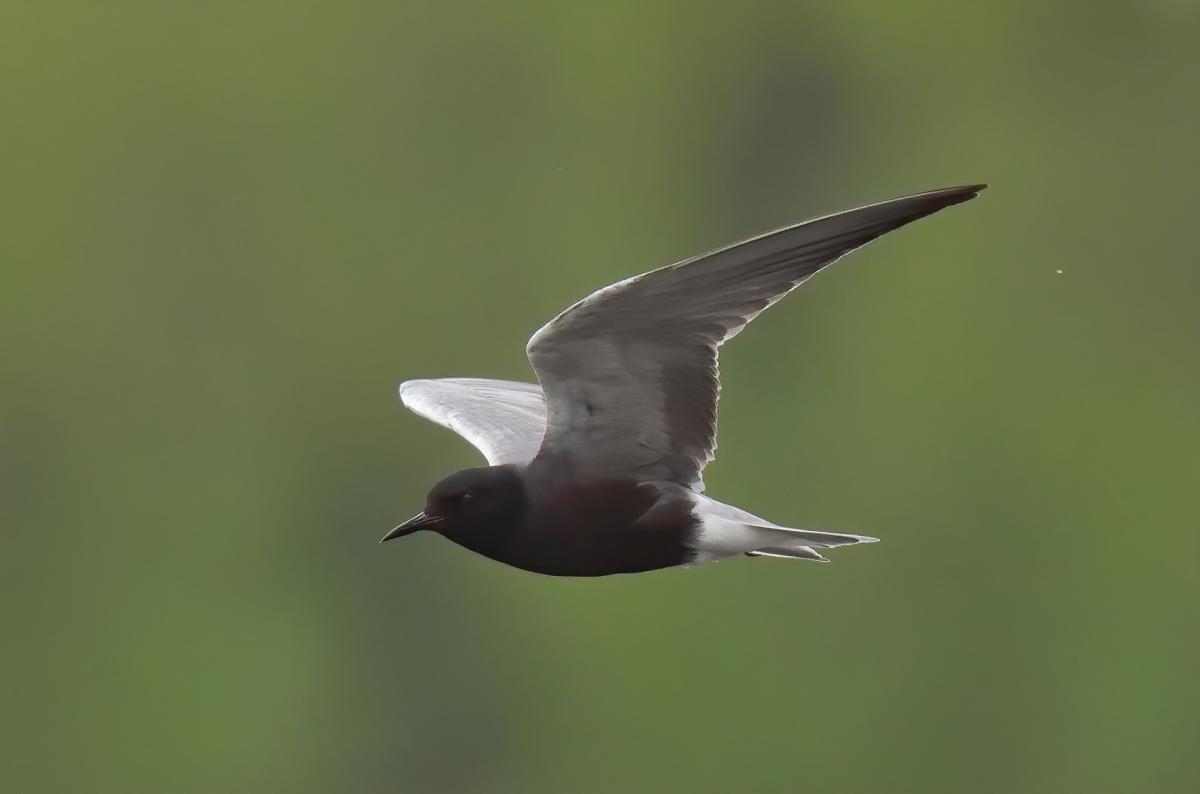Author: EO
Exploring plastic ingestion by Toanui on Ohinau
September 4th, 2023Plastic is a threat to seabirds as many ingest it or become entangled in it resulting in mortality. Seabirds could mistake the smell of plastic for the smell associated with the prey items leading to plastic acting as a type of sensory trap. However, little research explores whether the seabirds are mistaking the colours of plastic for the colours of prey items. We explored this idea with the flesh-footed shearwaters/Toanui being our study species on Ohinau Island. It was previously reported by Wildlife Management International Limited that many of the Toanui on Ohinau was consuming plastic. By gathering the plastic regurgitated by seabirds as well as collecting the plastic found around the island we measured the spectral wavelengths of the plastic using a spectrometer. We then compared it to the spectral wavelengths of seabird prey items including fish, squid and crustacean. We found that clear/white plastic was the most dominant colour and also looked very similar to the seabird’s prey items. The seabirds could be mistaking the white plastic colour with the colour of prey items. However, green plastics also looked similar to prey items but were one of the least common colours found. More research is required to study other factors which could be influencing seabird plastic colour selection including the shape of plastic, the size of plastic and the plastic’s length of time in the ocean.
Read more about this project funded by the 2022 BNZRF report here
Birds of the Great Walks
August 18th, 2023Aotearoa New Zealand has many great walks. However, as of 2023, only ten of them qualify as capital-letter Great Walks. Te Papa natural history curator Dr Colin Miskelly has walked (or paddled) them all and kept records of the birds that he encountered along the way.
In the initial blog in a series that will cover them all, he describes what Great Walks are, and the system that he developed to compare and rank their birdyness: Birds of the Great Walks of Aotearoa New Zealand. More blogs of this series are available via the links below:
Birds of the Whanganui Journey ‘Great Walk’
Birds of the Tongariro Northern Circuit
Birds of Lake Waikaremoana Track
Birds of the Abel Tasman Coastal Track
Birds of the Routeburn Track
Birds of the Paparoa Track
Birds of the Rakiura Track
Birds of the Kepler Track
Birds of the Milford Track
Birds of the Heaphy Track
How RNZ’s Morning Report solved the mystery of a storm petrel
June 9th, 2023RNZ’s Morning Report birdcall has helped solve a mystery about grey-backed storm petrels in Fiordland.
Read more about this story here
Photo by Jean-Claude Stahl (Te Papa)
Historical Publications – The State of New Zealand’s Birds
May 30th, 2023The five reports “The State of New Zealand’s Birds” are now available on the Historical Publications page:
The State of NZ’s Birds 2009: Conservation of Migrant Birds
The State of NZ’s Birds 2008: Conservation of Birds on the Mainland
The State of NZ’s Birds 2007: New Zealand Bird Atlas
The State of NZ’s Birds 2006: New Zealand’s Seabirds
The State of NZ’s Birds 2005
Whanganui Newsletter
March 25th, 2023Download the latest Whanganui newsletter here
Other recent newsletters from around the regions are available here
Members can now choose to opt-out of receiving printed copies of publications
January 24th, 2023Council is always aware of the need to manage the financial resources of Birds New Zealand efficiently and wisely. For many years a large item of expenditure has been, and continues to be, printing and postage of our ‘Notornis’ scientific journal and the ‘Birds New Zealand’ magazine. Council is aware from correspondence and from conversations that many members do not read ‘Notornis’, or prefer to read and download individual papers and short notes on-line. Some prefer to read the magazine on-line too.
Following a discussion at its meeting in November 2022 on ‘Financial Resources, Independence and Administration’ – a topic set out in the Society’s long-term strategy – Council resolved to offer members a choice of continuing to receive printed copies of both publications, or receiving only the Birds New Zealand magazine, or not receiving printed copies of both publications.
Arrangements made by our website development partner now allow members to opt-out of receiving a print copy ‘Notornis’, or to opt-out of receiving print copies of both ‘Notornis’ and the ‘Birds New Zealand’ magazine. Please note that opt-ing out of receiving printed copies of these publications will not lead to a reduction of your membership subscription.
Members are invited to visit the Society’s website at any time; just go to birdsnz.org.nz/membership/login/#myaccount/. Then log-in to your Members Account using your email address and password. At the foot of the Members webpage, you will see the following opt-out choices in the drop-down selection box:
If you wish to opt-out of receiving (i) a printed version of the “Notornis” journal, or (ii) printed versions of “Notornis” AND the “Birds New Zealand” magazine, please select option (i) or option (ii):
- (i) I want a printed copy of “Birds New Zealand”, but NOT “Notornis”.
- (ii) I DO NOT want any printed publications.
- (iii) I want printed copies of BOTH publications.
If NO selection is made, or you select option (iii), you will continue to receive printed versions of both publications.
Please note, these selections cannot be made by Family Members who do not receive printed copies of the publications.
Council encourages members to consider these choices carefully and to opt-out of receiving printed copies of our publications if you don’t really need them.
The journal and magazine are published four times each year (March, June, September and December) and can always be accessed at no cost through the Publications Archive page on the website by visiting birdsnz.org.nz/publications/. Just select the issue you wish to read.
Bruce McKinlay
President
Beach Patrol Submissions – now easier!
November 21st, 2022With a new user-friendly design and modern look, the Beach Patrol Scheme now has an online submission facility, which makes recording easy!
Check out the new Beach Patrol Scheme page and online submission form
Read more about the new Beach Patrol Scheme, its history and objectives here
First dedicated Seabird Surveys for Samoa
November 21st, 2022A research team from Samoa’s Ministry of Natural Resources and Environment, the Samoa Conservation Society and the Secretariat of the Pacific Regional Environment Programme, accompanied by seabird expert Chris Gaskin, undertook a seabird survey on Nuútele Island, Samoa.
Read more about their findings here
This project was supported by the Pacific Island Bird Conservation and Research Fund (PIBCRF)
Historical Publications – now available Online
November 1st, 2022Check out our new Historical Publications page, which now includes the
Annotated Index to Some Early New Zealand Bird Literature by H. C. Oliver (1968)
and an Introduction to the Index
Why do seabirds die?
October 18th, 2022Initial analysis from a recent study into the cause of seabird deaths, based on injured birds from the Hauraki Gulf, suggests the main cause to be head trauma, followed closely by internal bleeding or a combination of both. These are the types of injuries consistent with that of groundings and collisions from light pollution as many seabirds have been documented to be disorientated by lights and end up landing on the ground and/or colliding with structures. The research, using dissections and necropsies, has helped provide some evidence that seabird groundings from light pollution can be fatal for many seabirds. This information can be used for future planning to reduce light pollution in New Zealand cities, and internationally.
A summary article of this project is available here
This research by Agustina Dominguez and Ariel-Micaiah Heswall was supported by the Birds New Zealand Research Fund.
New method for identifying bones
October 18th, 2022Recent research on bird bone shape and taxonomic ID has provided a new method for identifying isolated long bones using shape combined with landmark- and pseudolandmark-(landmark free) based classification analysis. The 3D shape-based classification method was applied to a case study of seabird bones belonging to penguins and tubenosed birds, where order- and family-level predictions of taxonomic identities were achieved with 100% accuracy. This work has now been published in Journal of Archaeological Science https://doi.org/10.1016/j.jasrep.2022.103641 and a summary article is available here.
This MSc research by Emma Holvast was supported by a David Medway Scholarship grant.
New Zealand gains two more endemic bird species
October 4th, 2022Recent analyses by Te Papa revealed several surprises that affect the conservation significance of prion populations on the Chatham Islands in particular, and also in the New Zealand subantarctic region as a whole!
The key findings were:
- The ‘fulmar prions’ from the Chatham Islands are not closely related to the true fulmar prions that breed on the Bounty Islands and Snares Islands (Western Chain), and are more closely related to fairy prions. As they breed in close proximity to fairy prions (on Mangere Island and the Murumurus), we recommend that the prions that breed on The Pyramid and the Forty Fours be recognised as a full species that is endemic to the Chatham Islands (Pyramid prion P. pyramidalis).
- The prions that breed on Heard Island (Australian territory) are subantarctic fairy prions (Pachyptila turtur eatoni) NOT lesser fulmar prions (P. crassirostris flemingi). This means that lesser fulmar prions are endemic to the Auckland Islands, and that Australia has lost a breeding species
- As the ‘fulmar prions’ from the Chatham Islands are not closely related to the true fulmar prions that breed on the Bounty Islands and Snares Islands (Western Chain), this means that the fulmar prion as a species is endemic to the New Zealand subantarctic region, with one subspecies on the Bounty Islands and Snares Islands (Western Chain) and the other subspecies on the Auckland Islands.
- Two subspecies of fairy prions should be recognised. Within the New Zealand region, the subantarctic fairy prion (P. turtur eatoni) breeds only on the Antipodes Islands. Beyond New Zealand it breeds on Macquarie Island, Heard Island, Kerguelen Islands, Crozet Islands, Falkland Islands and South Georgia. Under the New Zealand Threat Classification System, P. turtur eatoni should be classified as ‘Naturally Uncommon’, with the qualifiers ‘Secure Overseas’ and ‘One Location’.
Read more on the Te Papa blog: Then there were eight: Te Papa research reveals yet another species of prion
and the research paper: Genomic analyses of fairy and fulmar prions (Procellariidae: Pachyptila spp.) reveals parallel evolution of bill morphology, and multiple species
A lucky find – Matsudaira’s storm petrel
September 13th, 2022There are a handful of bird species that are included on the New Zealand list based on a single specimen found storm-wrecked somewhere on New Zealand’s long coastline. Curator Vertebrates Colin Miskelly describes the discovery of the latest addition to this list. Read more
A new page for “Matsudaira’s storm petrel” has now been added to the New Zealand Birds Online website.
Celebrating a lifetime dedicated to seabirds
August 22nd, 2022Graeme Taylor, Principal Science Advisor Marine, has been awarded the Robert Falla Memorial award at the 2022 New Zealand Bird Conference which was held in Christchurch in June.
Read more here
Australasian Bittern Survey (Birdlife Australia)
August 20th, 2022Australasian Bittern are a partially nocturnal, cryptic, and nomadic heron species, which historically, have been observed in three countries, including Australia, New Caledonia, and New Zealand. The species has been classified as globally endangered since 2016 due to the declining trajectory of its small remaining population (1000 – 2499 individuals). The lack of rigorous baseline data and understanding of breeding behaviour of the species have been identified as barriers to effective conservation efforts aimed at reversing these trajectories.
Very soon, male Australasian Bitterns will begin establishing their territories in freshwater habitats comprising dense reedbeds, and producing a distinct, low frequency call referred to as a ‘boom’. This boom both attracts females and intimidates rivals. Birdlife Australia is recruiting listeners from across the Australasian Bittern’s range to undertake coordinated listening surveys and help identify this season’s breeding sites. Ideally, volunteers should be available once over these date ranges:
- September 8 – 12th,
- October 8 – 12th,
- November 6th – 10th,
- December 6th – 10th
There’s no expectation to be available for every date. Listeners can determine how many they’re available for. Even just one dawn or dusk survey during the identified dates is an exceptional contribution.
More information can be found here: https://www.networkbirdlife.org/volunteer-opportunities/keep-an-ear-out-for-australasian-bitterns-at-your-local-wetland
Birdlife Australia
Australasian Shorebird Conference 2022 – Registration open
August 20th, 2022The 12th Australasian Shorebird Conference will take place online from 29-30 October 2022. The Conference is online and registrations are now open here.
The theme for this Conference is “Global Strategies Local Actions” and through the Conference program we will look at what has been happening across the east Asian – Australasian Flyway since the 11th Australasian Shorebird Conference held in 2018.
We know of the many ongoing challenges that face shorebirds including loss of habitat, hunting, pollution and competition for food resources. Add to that the increasing threats from climate change and greater impacts from a growing human population in the Flyway, their world becomes more and more uncertain.
Strong efforts are being dedicated at the global and local level to understanding, raising awareness about, and addressing the problems facing shorebirds. You will see this reflected through the range of exciting sessions during the two days. Knowledge and action go hand in hand, and we will see the efforts that are being dedicated to achieving better outcomes for shorebirds.
Abstracts on presentations that support these themes are invited. The deadline for abstract is 15 August and more information is here.
All keen “shorebirders” will find the program of interest however you are engaged with our amazing shorebirds. We encourage you to register and join the Conference to learn more about and be part of the wonderful world of shorebirds and those seeking to ensure their conservation.
The cost of registrations is at an all time low.
| Category | Registration fee ($AUD) |
| Employed | 120.00 |
| Member of AWSG | 50.00 |
| Non-member | 90.00 |
| Student | 40.00 |
If you are a student from East Asia there is support for you to attend. Please look here for more details.
By registering you have the following benefits:
- Have access to the virtual platform and all sessions during the conference.
- Have access to a wide range of your peers and their latest research.
- As a presenter you will be able to share your latest research or management successes with an international audience of your peers.
- Have the opportunity to connect with your acquaintances and fellow conference attendees using the Meeting Hub. You can share contact details, send chat messages, video chat and set up meetings.
- During live session Q&A sessions you be able to submit written questions to the session chair. The pre-recorded video sessions will be followed by discussion forums where your question will be posed to the author by the session chair.
- Have access to recorded session content for two months after the conference has ended.
Dead little penguins washing ashore
June 17th, 2022Bodies of hundreds of little blue penguins have washed up on the beaches of New Zealand’s northern coast in recent weeks. Read the stories:
Dead little blue penguins keep washing ashore in New Zealand
(CNN, 16 June)
Search for clues as bodies of hundreds of little blue penguins wash ashore
(The Guardian, 14 June)
Hundreds of dead penguins wash up on Far North beaches (RNZ, 13 June)
Fee for Driving on Muriwai Beach
June 16th, 2022Auckland Council is proposing a fee-based permit system to better control vehicle access to the west coast beach.
Birds NZ is one of many conservation groups agreeing with the proposal.
Read the full story on 1 News (13 June).
(Image by Graham Lowther)
New edition of Checklist
June 7th, 2022A new edition of the ‘Checklist of the Birds of New Zealand’ was published by Birds New Zealand this week. For the first time in the 69-year history of these checklists, it is digital-only, published as both web-pages and a pdf (links provided below). The checklist provides the bird names and structure used for the popular New Zealand Birds Online website, which has been updated to match the new checklist.
Compared to the previous (2010) edition, the new checklist gives much greater prominence to Māori bird names. The names used in the checklist are derived from a database of 2,515 Māori and Moriori bird names, compiled by Checklist Committee convenor (and NZ Birds Online editor) Dr Colin Miskelly. Dr Miskelly explained that a major motivation for his research was feedback sent to the NZ Birds Online website. “By far the main criticism received was that we didn’t give enough prominence to Māori names for the birds of Aotearoa. And I agreed with them. As the names on the website were based on those in the 2010 checklist, we decided that the best approach was to update the checklist, so that users of the website could look deeper into why each name was selected.”
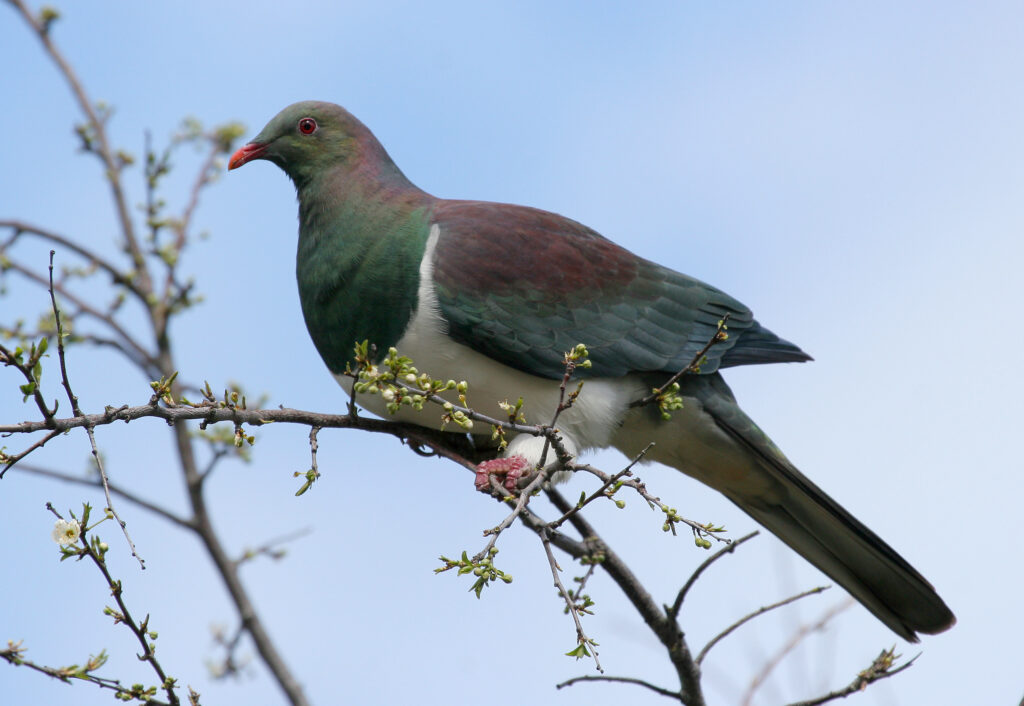
Many birds have multiple Māori names, as different names may have been given to different life stages, as well as different iwi having their own names for the same species. The Māori bird names presented in the main part of the checklist reflect the Māori bird names that have been used most often in the scientific literature. “This is a different question from what is the most appropriate Māori name to use for each species” said Birds New Zealand president Bruce McKinlay. “I am delighted to see Māori bird names featuring so prominently in the new checklist, and hope that matauranga Māori scholars and iwi will use this new database as a resource to advance their own research into the names that have and should be used for these taonga.”
Checklist of the Birds of New Zealand weblinks
Checklist (webpages) – birdsnz.org.nz/society-publications/checklist/
Full Checklist (pdf) – birdsnz.org.nz/wp-content/uploads/2022/05/checklist-2022.pdf
Appendix 3 – Alternative names for NZ birds (webpages) – birdsnz.org.nz/society-publications/checklist/appendix-3-alternative-names-for-new-zealand-birds/
Appendix 3 – Alternative names for NZ birds (pdf) – birdsnz.org.nz/wp-content/uploads/2022/05/checklist-2022-appendix3.pdf|
Full database of alternative names for NZ birds (Excel spreadsheet) – birdsnz.org.nz/wp-content/uploads/2022/05/supp-2-bird-names-database.xlsx
Contacts for further information or interviews
Dr Colin Miskelly (Bird Curator, Te Papa) – Checklist Committee convener, and New Zealand Birds Online editor – colin.miskelly@tepapa.govt.nz 021 805 231
Bruce McKinlay – Birds New Zealand President – president@birdsnz.org.nz 027 389 1477
Featured image: Great spotted kiwi, Matthias Dehling, New Zealand Birds Online
Black tern added to New Zealand list
May 19th, 2022I am pleased to report that black tern has been officially added to the New Zealand list!
The following Te Papa blog tells the story of how it was discovered and recognised:
A new bird for New Zealand – black tern
Thanks very much to Elizabeth Taylor, Oscar Thomas, John Graff, Russell Cannings and Sav Saville for the parts they played, and to Roger Smith, Gordon Petersen and Matthew Rodgers for their images used both in the blog and on the new Black tern page that Oscar wrote for NZ Birds Online:
Ngā mihi nui
Colin
